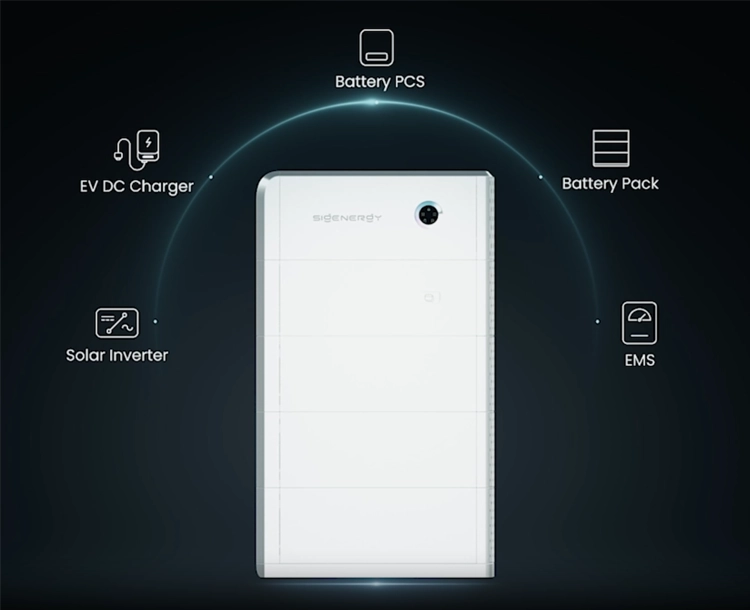What is an STC?
- Logan Haggerston
What is an STC for Solar in Australia: A Comprehensive Explanation
In Australia, the Small-scale Technology Certificates (STCs) play a significant role in encouraging the adoption of solar energy systems for residential and small business sectors. STCs form a part of the Australian Government’s Renewable Energy Target (RET) and are more commonly known as Australia’s residential solar rebate. The primary goal of this scheme is to make small scale solar panel systems more affordable for everyone, thereby promoting a sustainable and eco-friendly future.
The Small-scale Renewable Energy Scheme (SRES) offers these government-regulated certificates as incentives when individuals or businesses install eligible small-scale renewable energy systems such as a solar PV system, new solar panels, energy storage devices like solar batteries, solar water heaters, wind, or hydro systems. An STC is equal to 1 megawatt hour of renewable electricity, either generated or displaced by these systems. They function as tradable credits that can be sold or exchanged in a stock-like market, allowing individuals and businesses to claim discounts on their solar installations or earn money from the certificates.
Understanding the concept of STCs and how they can benefit the consumers is crucial for anyone planning to invest in solar energy systems in Australia. In the following sections, we will delve deeper into the process of claiming STCs, the eligibility criteria, and their real-world implications for solar system users.
What is the STC Rebate in Australia?
Definition of STC
Small-scale Technology Certificates (STCs) are a component of the Small-scale Renewable Energy Scheme in Australia. They represent a “rebate” or incentive provided by the Australian Government to encourage individuals and small businesses to install renewable energy systems, such as solar PV panels, wind turbines, and hydro systems.
Purpose of STC
The primary goal of the STC program is to promote the adoption of renewable energy sources and contribute to a sustainable energy market in Australia. By providing financial incentives for the installation of small-scale renewable energy systems, the government aims to reduce greenhouse gas emissions and reliance on non-renewable energy sources, thereby reducing the nation’s overall carbon footprint.
What is an STC Worth?
An STC is equal to 1 megawatt-hour (MWh) of renewable electricity generated or displaced by eligible small-scale renewable energy systems, such as solar PV, wind, hydro, solar water heaters, and air source heat pumps. The value of an STC depends on market factors, demand for certificates, and the number of certificates created. Households and small businesses can redeem the value of their STCs by selling or assigning them, effectively reducing the upfront cost of installing renewable energy systems.
The STC rebate program assists in making renewable energy systems more affordable and accessible, ultimately increasing the overall percentage of renewable energy generation within Australia. By participating in the program, individuals and small businesses are directly contributing to the nation’s renewable energy goals and fostering a cleaner, greener future.
Pros and Cons of the STC System for Renewable Energy in Australia
The Small-scale Technology Certificate (STC) is a crucial component of Australia’s renewable energy incentives. It provides financial support to households and businesses that install eligible solar panel systems, helping to reduce the upfront cost of solar installations. However, like any incentive program, the STC system has its pros and cons.
Pros
- Financial Incentive: The STC system can significantly reduce the initial investment required for solar installations. The value of STCs fluctuates, but their role in making solar more affordable cannot be overstated.
- Encourages Renewable Energy: As part of Australia’s Renewable Energy Target, the STC system encourages the growth of renewable energy by providing a financial incentive for individuals, businesses, and small-scale installers. The uptick in solar power unit installations can be attributed to this support.
- Flexible Trading: The certificates are tradable, offering flexibility to system owners when it comes to recouping costs. They can choose to sell their STCs on the open market or surrender them to a registered agent for a predetermined amount.
Cons
- Fluctuating Value: The value of STCs can change over time, influenced by a variety of market factors. This uncertainty may negatively impact the potential savings for solar energy system owners who rely on STC values for financial planning.
- Geographically Dependent: The number of STCs awarded depends on the system’s location, with different zones receiving varying amounts based on their renewable energy generation potential. This approach may create disparities in incentive value for those in less favourable zones.
- Limited Scope: The STC system only applies to small-scale renewable energy systems such as solar PV, wind, and hydro installations, as well as solar water heaters and air-source heat pumps. Individuals or businesses interested in pursuing larger-scale renewable projects must seek support through other programs.
The STC system in Australia serves as an effective means of promoting renewable energy adoption. Despite its limitations, it has contributed significantly to the growth of sustainable, clean energy across the country.

How Do I Claim an STC in Australia?
Eligibility for STC
In Australia, Small-scale Technology Certificates (STCs) serve as financial incentives for homeowners and businesses to install eligible small-scale renewable energy systems, such as solar PV, wind, hydro, and solar water heaters. To be eligible for STCs, the renewable energy system must meet specific criteria set by the Clean Energy Regulator. For solar water heaters and air source heat pumps, they must be listed on the register of solar water heaters, installed within 12 months prior to the creation of certificates, and classified as small-scale.
Process of Acquiring STC
Claiming an STC involves a few steps. First, determine the eligibility of the small-scale renewable energy system to be installed. This requires confirming that the system meets the required criteria for STCs.
Next, calculate the number of STCs to claim for your system. The quantity of certificates depends on factors like the type of technology, installation location, and system size. Remember that 1 STC is equivalent to 1 megawatt hour of renewable electricity generated or displaced by the eligible system.
Once the number of STCs has been calculated, obtain and complete the appropriate compliance paperwork. This documentation is crucial for ensuring that the installed system meets the necessary requirements and is in compliance with the regulations set by the Clean Energy Regulator.
Finally, create an account in the REC Registry, which includes verifying your identity. This account enables individuals and businesses to manage their STCs, including trading or selling them in the market.
Valuing STCs in Australia
Factors Affecting STC Value
The value of Small-scale Technology Certificates (STCs) in Australia is influenced by several factors. One of the primary factors affecting their value is the location of the solar installation. Australia is divided into various zones based on postcode, with each zone having a different solar irradiance level that ultimately impacts the number of STCs assigned to a particular system.
Another factor that affects STC value is the size of the solar system being installed. This means that as the size of the solar system increases, so does the number of STCs. The Small-scale Renewable Energy Scheme (SRES) determines the number of STCs for eligible solar installations, including solar PV, wind, hydro, and solar water heater systems.
Current Rates
STC prices notoriously fluctuate. The lowest price seen for an STC previously was around $16 per certificate and currently, the value on the open market ranges between $30-40. However, STC prices are capped at $40 per certificate in the STC Clearing House.
As an example of how these rates are applied, let’s say the price is $37 per certificate and a roof has space for 17 x 320W solar panels, totalling a 5.44kW system size. The calculation for this scenario would be: 1.382 x 10 x 5.44 = 75 STCs. With the current STCs price at around $37 per certificate, 75 STCs x $37 would equate to an STC rebate value of approximately $2775.
As a result, the current rates for STCs in Australia can make a significant difference in reducing the overall cost of installing solar power systems. By taking into account the factors affecting STC value, such as location and system size, as well as the most recent rates, consumers and businesses can determine the potential savings through participating in the Australian solar rebate system.
Key Takeaways
- STCs (Small-scale Technology Certificates) incentivize small-scale renewable energy installations in Australia, such as solar PV systems.
- They contribute to Australia's Renewable Energy Target by making renewable energy more affordable.
- STCs are tradable and their value varies based on market factors and the system's location.
- The scheme supports renewable energy adoption, with benefits including cost reduction for installations and encouraging sustainable energy use.
- Challenges include fluctuating STC values and geographic disparities in incentives.
Get a Solar Power System Quote Today!
If you’re looking to install a fully equipped solar power system, our dedicated local team will examine your unique property for a quote. Our expert installers can help you find the best solar system solution for your needs, using reliable and trusted brands.


